Pohnpei — Home of a lost civilization?
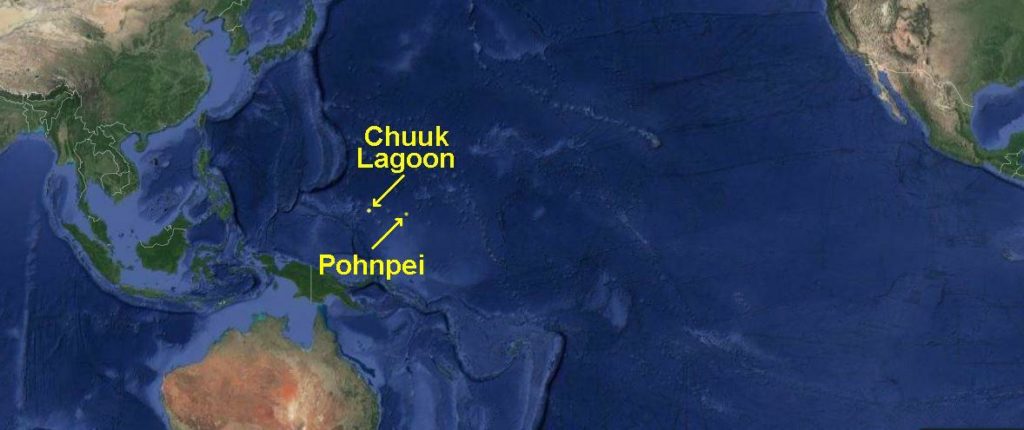
After an amazing week of wreck diving in the Chuuk Lagoon, I hopped 700 kilometers east to the island of Pohnpei. On short flights like this, I like to get a window seat. Occasionally the big empty blue Pacific is interrupted by a jewel like the atoll below. I don’t know the name of this atoll, but with no fresh water and very little land, it’s not likely to be inhabited. Still, it’d be a perfect place to anchor a yacht — if you could find a gap in the outer reef. Or maybe a romantic spot for a picnic — if you could get there and back.
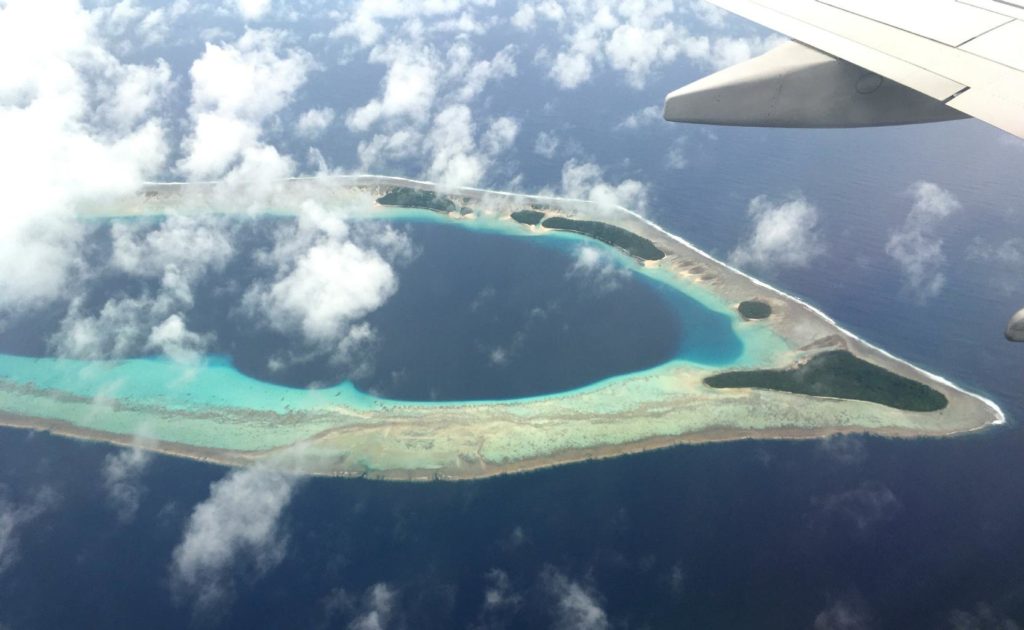
Pohnpei is the capital of the Federated States of Micronesia (FSM). It’s a pretty island covered with lush jungles and full of flowers, deserving of its nickname: The Garden Island. Like the rest of the FSM, it’s a quiet tropical paradise.
On the coast, Pohnpei has dramatic cliffs and mangrove forests. In town, there’s a Spanish wall and a German church, dating back to Micronesia’s colonial days. There’re also a few Japanese tanks and guns leftover from WWII.
Of the FSM’s four states, Pohnpei is the most developed. That’s not saying much. There are no buildings taller than 3 stories. The power goes off once a day. At least the roads are paved, the internet works and people are friendly. (Yes, he’s actually friendly and gave good directions.)
What’s special about Pohnpei is an archaeological mystery called Nan Madol. On the southeast corner of the island are ruins of an ancient city that has more questions than answers.

About 1000 years ago, a civilization with impressive engineering skills created 92 walled, rectangular islands using columnar basalt transported 20 kms from the opposite side of the island. These basalt columns weigh from 5 to 50 tons. It’s estimated that 750,000 tons of rock were moved here to create Nan Madol, which puts this site on roughly the same scale as Angkor Wat in Cambodia, Machu Picchu in Peru or Chichen Itza in Mexico. Not bad for some Pacific islanders with no pulleys, no levers and no metal.
Very little is known about the builders of Nan Madol because they didn’t have a written language, they left behind no artwork, sculptures or carvings, and they disappeared about 400 years ago. Pohnpeians tell legends involving sorcerers, levitation and even a flying dragon to explain how these rocks were transported across the island and stacked on top of each other. But no one knows the purpose for this huge city.
There are also eerie stories of Nan Madol’s dark forces. One day in 1907, a German archaeologist excavated the tomb in the main temple — and then died suddenly that night. The artifacts which he collected were lost when his ship sank on its return to Germany. In the late 1930s, Japanese scuba divers went searching underwater. Two of their divers disappeared. Their bodies were never found. The items they collected ended up in Hiroshima, only to be vaporized by the atomic bomb in 1945.
Aside from Easter Island, Nan Madol is the main archaeological site in Oceania made from huge rocks.
But while Easter Island gets more than 100,000 visitors a year, Nan Madol sees fewer than 1,000. On the day that I visited Nan Madol, I was the ONLY tourist. I was glad to have the company of a local guide who made sure that I didn’t disappear into a bottomless pit.

Here’s the quarry where 40% of Nan Madol’s basalt came from. No one is quite sure where the other 60% of the rock came from. As I said, there are many questions about this place.
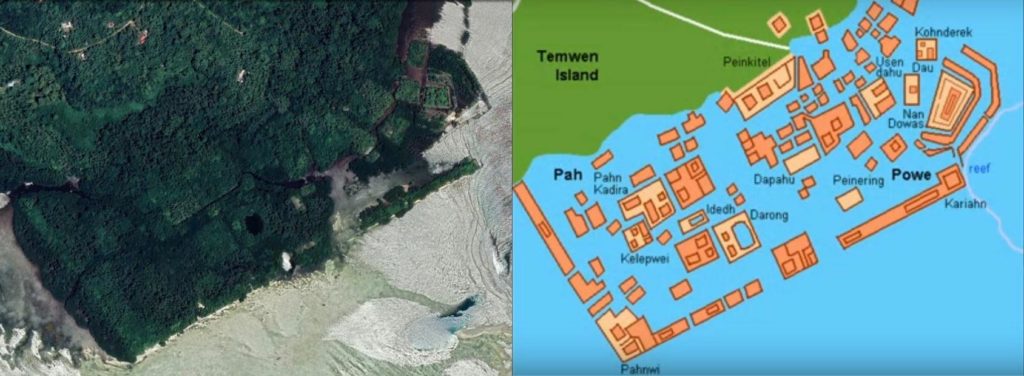
The Google Earth photo above left shows what Nan Madol looks like from space. Don’t be surprised if you can barely make out the ancient city or the individual islands. Mangroves have taken over in the four centuries since Nan Madol was abandoned. The map on the right shows the islands that archaeologists have identified so far.
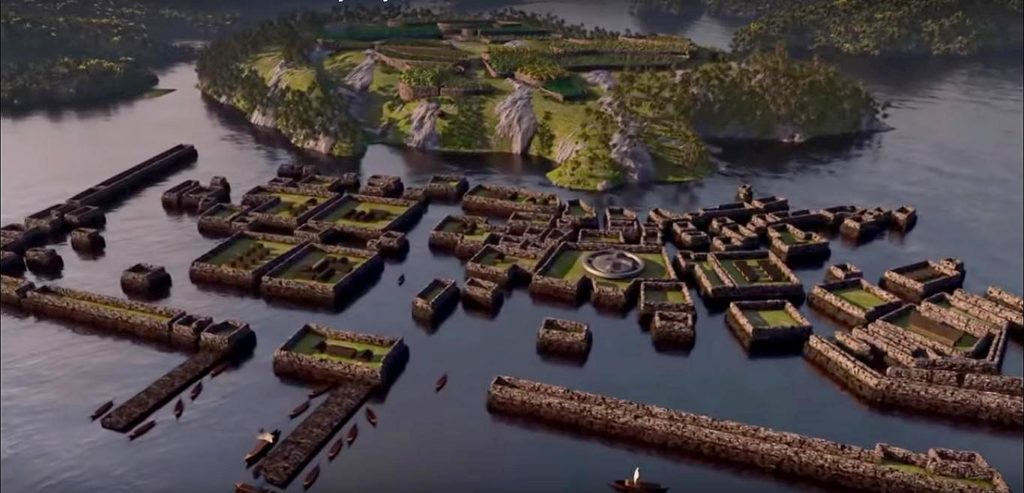
Finally, here’s an artist’s reconstruction of what Nan Madol might have looked like when it was occupied. Does it remind you of an ancient Venice? That’s how some people describe it. Was this an important sea faring port for Micronesian traders navigating the Pacific? Or was it a space station for extraterrestrials — as others might theorize? Some day, perhaps we’ll find out who built it and why.
I’m astounded to discover such a curious and bizarre place out here in the middle of the Pacific Ocean. I thought I knew about all the world’s ancient civilizations. It just goes to show how much one can learn by traveling and going to to places you’ve never been before.



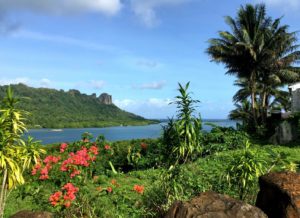



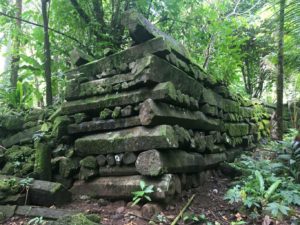
You’re a great teacher NIck. Your photos and narrative bring back wonderful memories.l
Keep on ‘truckin!
Marvin & Tris
Isn’t Pohnpei the home of Cthulhu (Lovecraft)?
I marvel at your stamina.
Yes, it is. Bravo for making this connection!
As always, interesting, informative, and another reminder that life can be idyllic without all the “stuff and things.”. And healthier too!
Wow. Thanks.
David F
Nick thanks for sharing this you are mister adventure!! I think Nancy and my trip to Africa will be canceled this year. Keep the stories coming and travel safe! Dana & Nancy P.S if you go to those ruins send pictures